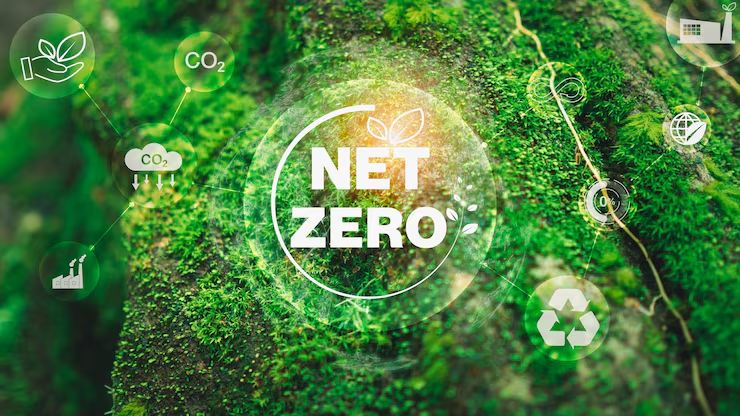Why Emissions Transparency
Will Decide the Future of Logistics Contracts

In the high-stakes world of logistics, where speed and cost have long reigned supreme, a new factor is reshaping the industry: emissions transparency. Buyers, from global corporations to eco-driven startups, are now demanding detailed carbon data from carriers, making it a critical determinant in winning contracts. As sustainability regulations tighten and global trade faces greener scrutiny, logistics firms must embrace transparency to stay competitive. At the World of Circular Economy (WOCE), we’re equipping carriers with tools like esgpro.ai to meet this demand. Here’s why emissions transparency is the new currency of logistics contracts and how carriers can thrive in this sustainable shift.
The Shift: Buyers Demand Carbon Clarity
Logistics accounts for approximately 14% of global greenhouse gas emissions, according to the International Transport Forum, putting the sector under intense pressure to decarbonize. Buyers are no longer content with just timely deliveries or competitive pricing, they’re insisting on Scope 3 emissions data, which covers indirect emissions from supply chain activities like transportation. A 2024 McKinsey survey revealed that 68% of global shippers prioritize suppliers with strong ESG (Environmental, Social, Governance) credentials, with carbon footprint reporting at the forefront.
This shift is driven by both regulation and market forces. Policies like the EU’s Carbon Border Adjustment Mechanism (CBAM), fully effective in 2026, and Singapore’s mandatory climate disclosures, starting FY2025, compel companies to quantify every ton of CO2 in their value chains. Meanwhile, consumer demand is surging, 80% of global consumers prefer brands with transparent sustainability practices, per a 2025 Nielsen report. For carriers, this means contracts increasingly hinge on providing verifiable emissions data, and buyers are ready to switch to greener partners to get it.
The Stakes: Transparency as a Competitive Edge

Emissions transparency is fast becoming a deal-breaker in logistics. Imagine a $10 million shipping tender where buyers require carriers to submit Scope 1 (direct emissions from owned vehicles), Scope 2 (indirect emissions from purchased energy), and Scope 3 emissions data alongside their bids. Carriers unable to deliver this risk losing out to rivals who blend cost efficiency with sustainability metrics.
The consequences of falling short are steep. Failing to meet buyer expectations or comply with regulations like CBAM, which imposes costs of €70-100 per ton of CO2 for high-emission imports by 2026, can result in lost contracts, reputational harm, and financial penalties. On the flip side, transparency unlocks rewards: some buyers offer up to 5% higher rates for low-carbon logistics, per a 2024 Deloitte study. Transparent carriers also gain access to the $1.4 trillion sustainable investment pool, as reported by Bloomberg Intelligence, giving them a clear edge in a crowded market.
Why Transparency Is Tough
Achieving emissions transparency is no easy task. Logistics firms face significant hurdles:
1. Data Complexity: Calculating Scope 3 emissions across fleets, subcontractors, and global supply chains demands granular data from fuel usage, routes, and operational practices.
2. Technology Gaps: Many carriers rely on outdated systems or manual processes, leading to inaccurate or incomplete reports. Only 22% of logistics firms have fully digitized ESG tracking, per a 2025 PwC report.
3. Cost Barriers: Implementing emissions monitoring tech can cost $500,000-$1 million for mid-sized firms, a challenge in a low-margin industry.
4. Greenhushing Risks: Some carriers avoid disclosing emissions to sidestep scrutiny, but this backfires, with 75% of buyers rejecting non-transparent partners, per a 2024 EY survey.
These obstacles highlight the need for smart tools and strategies to keep pace in a market where sustainability is non-negotiable.
Strategies to Stay Competitive

To secure logistics contracts in the era of emissions transparency, carriers must act decisively. Here are five strategies to stay ahead:
1. Invest in Data Systems: Adopt AI-powered tools like esgpro.ai to automate emissions tracking across operations, ensuring accuracy and efficiency.
2. Collaborate with Partners: Work with shippers and subcontractors to collect reliable Scope 3 data, using shared platforms to simplify the process.
3. Optimize Operations: Analyze data to pinpoint fuel-heavy routes or inefficient vehicles, transitioning to electric fleets or biofuels where possible.
4. Embrace Offsets: Use verified carbon credits to offset unavoidable emissions, demonstrating commitment to net-zero goals.
5. Communicate Transparently: Avoid greenhushing by sharing clear, verifiable emissions data in tenders and reports, building trust with buyers.
The Broader Impact: A New Logistics Paradigm
Emissions transparency is redefining logistics contracts, much like digital tracking transformed the industry two decades ago. Global leaders like Amazon and Walmart now mandate emissions reporting in supplier agreements, setting a new standard. Regulations like CBAM and Singapore’s climate disclosures are amplifying this trend, with ASEAN nations like Malaysia exploring similar frameworks. This “green ripple effect” demands that logistics firms worldwide adapt to remain viable.
Early adopters are already reaping benefits. A 2024 Bain & Company study found that low-carbon carriers achieved 10% higher contract win rates and 15% stronger investor interest. By aligning with buyer demands and leveraging tools like esgpro.ai, firms can turn transparency into a competitive differentiator.
What Next
By 2026, when CBAM is fully enforced and Scope 3 reporting becomes mandatory for many, carriers without robust ESG data will struggle to compete. Those who act now, embracing transparency, investing in technology, and offsetting emissions, will secure contracts, attract capital, and lead the green logistics charge. At WOCE, we’re dedicated to making this transition seamless. Our esgpro.ai platform enables carriers to track, offset, and report emissions effortlessly, turning sustainability into a strategic strength.




